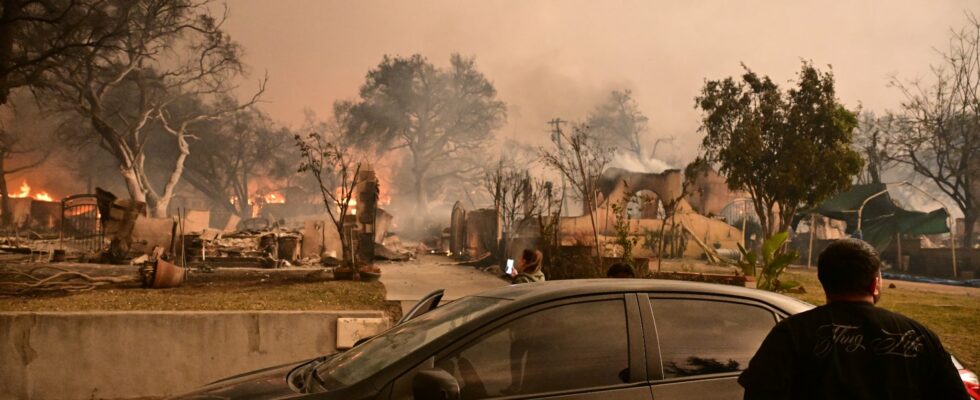Hollywood is on fire. Since January 7, Los Angeles County has been battling several major fires that are coming dangerously close to the city. The first, nicknamed the “Palisades Fire”, has already razed an area of around 70 km² to the west of the city while the Eaton fire, a little further north, rages over around thirty km². Between them, they cover an area roughly equivalent to that of Paris. California state services have already counted more than 130,000 people evacuated and thousands of buildings destroyed.
These fires are impressive with their scale during this season. California is very regularly affected by fires, but traditionally, the fire season extends from June to October in the region. The winter season is generally a little more spare. However, the State has been facing a violent drought since this summer, which has favored the outbreak of fires, whether of natural, accidental or voluntary origin.
This time, they are also amplified by a particular weather phenomenon nicknamed “the Santa Ana winds.” These warm winds that generally blow across California in the fall are particularly violent this year. “We expect this to be the strongest wind episode in this region since 2011,” Dr Daniel Swain, climatologist at the University of California (UCLA), told AFP.
This is not the first time that Los Angeles County has been hit by fires of this magnitude. In 2020, the Lake fire also razed around thirty km², but over a period of a month and a half. With winds not expected to abate until Friday, the damage is expected to be even greater. Five people have already lost their lives in these multiple fires, placing them among the ten deadliest in recent California history.
Same tragic scenario in terms of material damage: more than 2,000 buildings were damaged or destroyed by these fires. Since the start of the 2000s, only four fires have caused more damage. These record destructions can be explained by the proximity between the fire outbreaks and the Los Angeles metropolitan area. The upscale neighborhoods of Pacific Palisades and Hollywood Hills, where many of America’s wealthy people live, are among these damaged buildings. For American insurance companies, the bill risks being steep.
